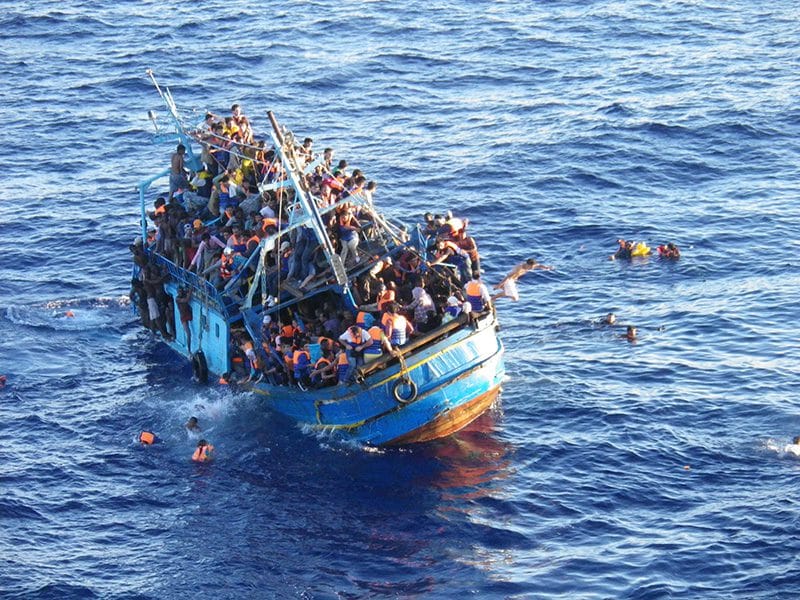The rescue of an 11-year-old girl from the Mediterranean Sea has brought attention to the perilous conditions faced by individuals attempting to cross the water. The girl, whose name has not yet been released to the public, was found clinging to discarded tyre tubes, reportedly the remains of a makeshift raft. She was discovered by the crew of a cargo ship en route to a European port, who immediately alerted maritime authorities.
The timeline of events indicates the girl had been adrift for approximately three days, exposed to the elements and without access to food or fresh water. The area where she was found is known to be a frequent route for migrant vessels attempting to cross into Europe from the North African coast.
Initial reports suggest the girl was part of a larger group that embarked on the crossing, possibly from a location in Libya. The fate of the others in her group is currently unknown. Rescue efforts are ongoing, with maritime authorities from several countries coordinating searches in the area where she was found, utilising both sea vessels and aerial support. The search is challenging due to the expansive area and unpredictable weather patterns. The girl is unable to provide much information regarding the other members of her group. Due to the extreme situation she faced, there is some initial challenges for authorities to understand the language she speaks.
Upon being rescued, the girl was immediately provided with first aid and moved to a safer area of the vessel. The crew, trained in basic emergency procedures, provided her with rehydration fluids, food, and blankets. They were able to establish a basic level of communication before a helicopter transport was organized. Upon reaching the Maltese coast guard, the girl was then flown to a hospital in Malta, where she is now receiving treatment. She is currently in stable condition but continues to be monitored for signs of dehydration, hypothermia, and other potential health complications. Doctors are also providing psychological evaluation and support.
The incident has triggered a renewed focus on the challenges faced by individuals and families undertaking these perilous voyages across the Mediterranean Sea. The lack of safety precautions on these vessels has been a point of concern for several international organisations. The use of substandard and improvised vessels is a frequent occurrence for crossings of this nature. The lack of life jackets and navigation systems significantly increases the risk of incidents at sea.
The ongoing search and rescue operations highlight the logistical and resource-intensive nature of these responses. The involvement of multiple international agencies and governmental bodies is often required to coordinate efforts. The sheer volume of individuals attempting these crossings places a great deal of stress on the capacity of these services.
The rescue has initiated further discussion regarding international law and maritime responsibilities. It is important for vessels and other individuals to be aware of the legal and moral obligations surrounding individuals found in distress at sea.
The incident serves as a reminder of the humanitarian crisis surrounding these migratory routes. The complex factors that contribute to this migration includes poverty, political instability, and conflict. Experts cite these as key factors in why people choose to make these dangerous crossings. There are no simple solutions, and the collaboration of multiple nations is required.
The girl’s story, although unique to her, is one of many individuals and families attempting to cross the Mediterranean. The dangerous journeys are not uncommon with many people trying to seek refuge or economic opportunity. The dangers of this route can sometimes involve organised crime groups, human trafficking and other exploitive situations. International organisations are attempting to combat this criminal network.
The long-term consequences of these journeys are also a point of discussion with experts highlighting the physical and psychological trauma that these events can cause. Survivors often need long-term medical and psychological assistance to recover. There is a need to highlight these issues to raise awareness to the public and the international community.
The specific circumstances surrounding the girl’s journey are still under investigation, with authorities piecing together information from what can be communicated and any recovered evidence from the scene of the rescue. There are a number of investigations currently taking place to see if there are any human trafficking or smuggling links to this crossing. More information is expected in the coming days, as the international agencies communicate and gather more information. The health of the girl remains the most important aspect of the current situation.
The long-term care of individuals after these events is also an important consideration. International organisations work to provide assistance for food, housing, employment opportunities and psychological support to individuals after the event. The integration of individuals into new communities, while navigating the trauma is a complicated issue.
There is an increased need for further cooperation between nations to prevent loss of life. The coordinated efforts in maritime law enforcement and safe and legal migration routes are paramount to avoid any further loss of life. The incident has sparked widespread debate and calls for further action from international bodies. The story of the young girl found adrift on the Mediterranean has placed a human element on the ongoing challenges faced by migratory crossings.



